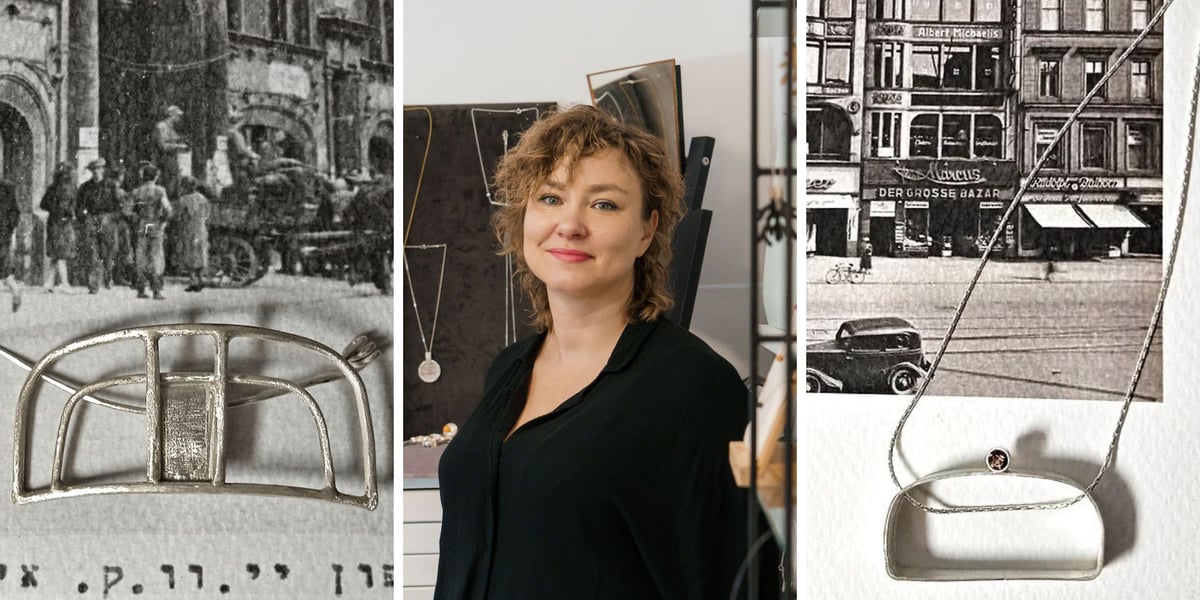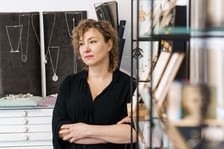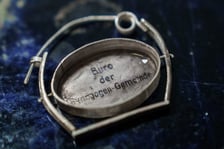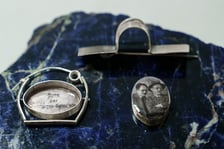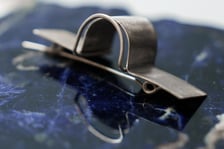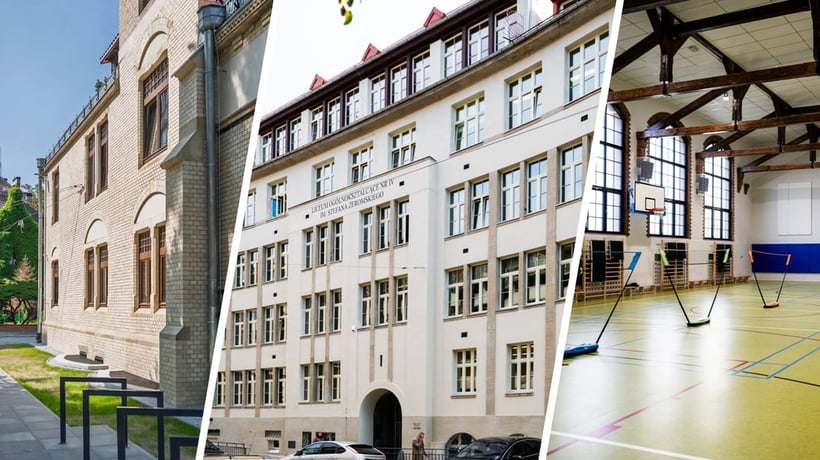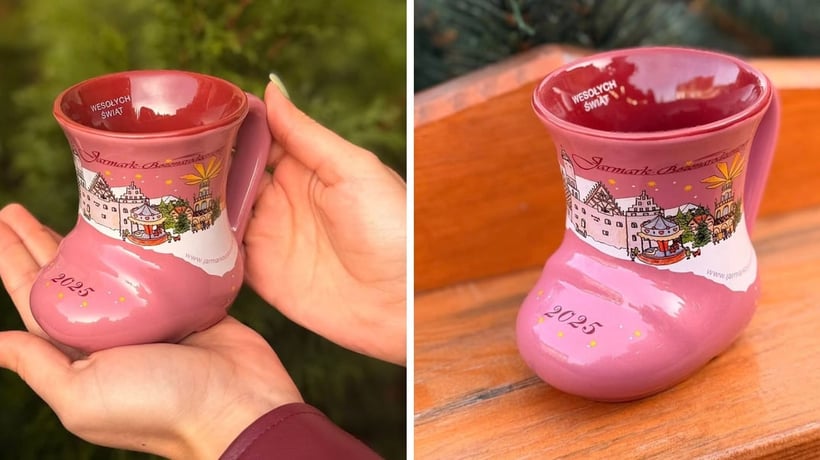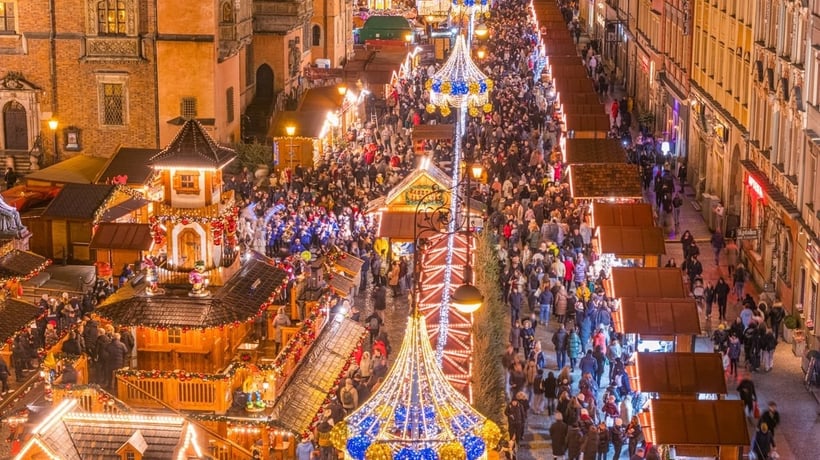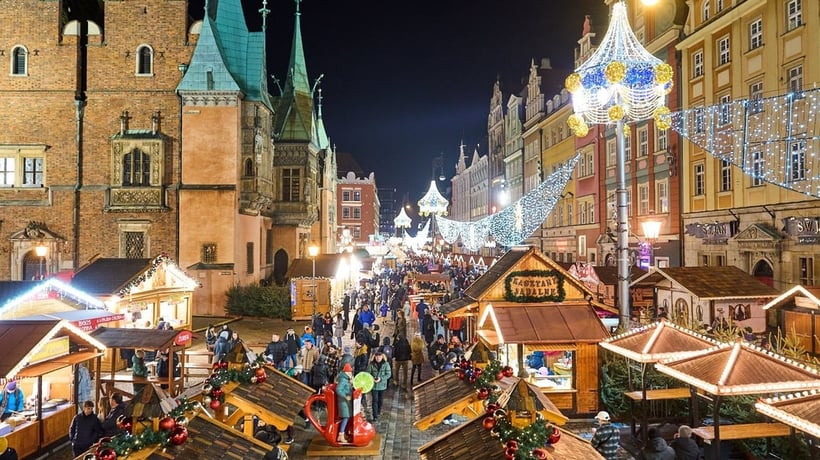The collection includes also a brooch, a necklace and cufflinks with a mysterious photograph of two nonchalantly smiling men, who are clearly friends.
‘These are modernist architects: Heinrich Tischler and his cousin Moritz Hadda – unusual people, Wroclaw bohemians, the whole collection owes its name “Boys” to them,’ admits Dominika Kuźniar.
The Wroclaw goldsmith hopes that the collection will attract as many fans as possible and draw the inhabitants’ attention to buildings and histories of their designers. ‘Maybe we will look at our city more carefully and curiously,’ she says.
Wroclaw modernism that inspires the jewellery designer
A lover of modernism for years, the goldsmith admires its Wroclaw version. Her fascination with architecture resulted in the use of concrete, which the artist combines with silver, pearl and precious stones.
An impulse for new artistic exploration emerged when Dominika Kuźniar met Agata Ganiebna – the president of the HA Foundation (she ran the Jewish primary school Shalom Aleichem).
Dominika Kuźniak, jewellery designer: ‘Agata made me realise how many buildings erected in Breslau that we pass by and admire every day were designed by architects of Jewish descent, and how many talented and exceptional families lived here. Among them there are Ehrlich brothers (Richard and Paul), Heinrich Tischler, Moritz, and Albert Hadda.
It is difficult to imagine Wroclaw without buildings designed by the aforementioned artists – the Ehrlich brothers built, among others, the famous trading house of Julius Schottländer (at the intersection of Świdnicka Street and Plac Teatralny square), and Moritz Hadda is responsible for the great design of a house at the WuWa housing estate (at 19 Zielonego Dębu Street) or the characteristic multi-family house of the Östreichers’ foundation (at the intersection of Hallera Street and Aleja Pracy avenue).’
Bohemians from Breslau
Not all of the “boys” planned the career of an architect. Heinrich Tischler actually become one by accident. He was a painter in the first place. Dominika Kuźniar transformed his prints into silver and used it for making earrings.
‘On one of the prints, we can see waves looking as if they were taken out of famous woodcuts by the Japanese master Hokusai. But it is an optical illusion,’ warns the Wroclaw jeweller, a great fan of Tischler’s works.
‘I also gave in to this illusion, however, we are watching a colour linocut made after World War I and what looks like Japanese waves, is actually an explosion, with dead people lying at the bottom. The beautiful patterns are the aftermath of the trauma that Tischler experienced during the war,’ explains the artist.
Dominika Kuźniak stresses that she appreciates Tischler as an excellent drawing artist and caricaturist but also architect and designer of furniture and interiors. She also loves designs by the Ehrlich brothers, who created a solid architectural family firm in pre-war Wroclaw.
In the collection ‘Boys’, Dominika Kuźniar used, among others, the shape of the window on the first floor of the facade of the house no. 49 at Wroclaw Market Square (it was home to the Trautner Trading House). She retained the shape in silver and added navy blue. ‘These stones play a significant part in Jewish symbology, where they stand for abundance,’ explains the designer.
Windows themselves are also important to her – she chose three for ‘Boys’, including two from the house at 5–9 Włodkowica Street. ‘The window is significant – it means openness, view, air. And the aim of my series is to shed light on history and bring some fresh air and new energy,’ admits Dominika Kuźniar.
‘Boys’ jewellery – a story about the history of Wroclaw
The prosperity of Jewish architects in Wroclaw lasted until the 1930s, and their war fates were tragic – the Ehrlich brothers died childless in the Theresienstadt camp in Terezin (today a Czech city), and Heinrich Tischler returned to Breslau after being imprisoned in the Buchenwald camp, but he died as a result of wounds sustained there. Moritz Hadda was murdered by the Germans in Kaunas.
The memory of the works of the Ehrlich brothers was maintained by a community centred around the Shalom Aleichem Primary School and by art historians. The descendants of the Hadds and Tischler survived the war and have been attached to Wroclaw for years. They received the idea of ‘Boys’ with great emotion and enthusiasm and were the recipients of the first copies.
Dominika Kuźniar stresses that her jewellery collection is not only a story of the Jewish architects of Breslau but also a reminder of the history of the city and the persons who lived here before us.
‘I am aware that many Wroclaw inhabitants know little about the pre-war history of the city, particularly about the fates of individual families. We have so few opportunities to learn about them! I think the collection ‘Boys’ is a good starting point to talk about the past and to think who built the city and under what circumstances, who lived here before World War II and how. This jewellery draws our attention to details and particular architects. Apart from its aesthetic value, my jewellery is to serve a declaration of knowledge and the will to share it,’ explains Dominika Kuźniar.
New Wroclaw collection – this time about girls
Currently ‘Boys’ consists of 9 items. ‘It is an open project – I do not know how many items I will design, but I hope as many as possible,’ says Dominika Kuźniar.
Every item is available in a limited number of 20 pieces. As the jeweller stresses, the collection will be expanded with new designs. She confesses that she also intends to create a series with girls from Breslau, and many persons inspire her. ‘These were suffragists – the women who acted dynamically, in spite of the then-prevailing patriarchy,’ says Dominika Kuźniar.
She reveals that one of the persons she is going to present in this collection will be Dina de Paradeda – the first documented trans woman living in Central and Eastern Europe, who lived for some time in Breslau and died there.
‘She was born as a man in Brazil – she was a great lover of Chopin, lived for some time in Paris and then arrived with her fiancé in Wroclaw. She committed suicide after a medical visit intended to prove she was not fully a woman,’ tells the Wroclaw jeweller.
Dominika Kuźniar is trying to obtain an artistic scholarship of the Mayor of Wroclaw to continue her story of the local history of people and architecture told through earrings, brochures, bracelets, rings and cufflinks for shirts.
Where to buy jewellery from the ‘Boys’ series?
You can buy Dominika Kuźniar’s designs in her online store, in her studio at 1 Purkyniego Street (on the ground floor) or at the exhibition Putting Things Back. Jewish Breslauers and Their Objects in the OP ENHEIM Cultural Centre.
‘Each part of the “Boys” collection has its number and certificate and contains a description of the person, building or work that inspired it,’ explains the Wroclaw designer.
Link to the text: https://www.wroclaw.pl/kultura/dominika-kuzniar-robi-bizuterie-inspirowana-architektura-i-postaciami-wroclawia
